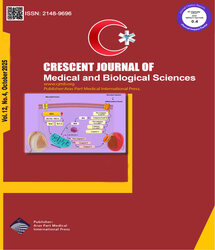

| Original Article | |
| The Assessment of the Ultrastructure of Luminal Epithelium in the Endometrium After the Application of Antiprogesterone | |
| Farzane Gafari, Fatemeh Afshari, Mohammad Taghizadieh | |
| Department of Histopathology and Anatomy, Tabriz Branch, Islamic Azad University, Tabriz, Iran | |
|
CJMB 2017; 4: 028-031 Viewed : 4266 times Downloaded : 4312 times. Keywords : Endometrium, Antiprogesterone, Superovulation, Ultrastructure |
|
| Full Text(PDF) | Related Articles | |
| Abstract | |
Objective: There is growing interest in the use of progesterone receptor modulators (e.g., mifepristone) for the treatment of gynecologic and other conditions. The aim of this study was to investigate the effects of antiprogesterone (RU486) on the ultrastructure of endometrial in the super ovulated mice at implantation window. Materials and Methods: Adult male and female mice were used for the induction of pseudopregnancy. The mice were divided into two experimental and control groups. The Experimental group was further subdivided into two groups based on hormone injection: 1) antiprogesterone and 2) hyperstimulation + antiprogesterone. The control group did not get any hyperstimulation. All groups’ uteruses were collected after 4.5 days of pregnancy and were prepared for the assessment of the histological changes with light microscopy (LM) and Transition Electron Microscopy (TEM). Results: The results showed that antiprogesterone injection decreases the height of microvilli and pinopods in the apical cell in comparison to the control group. Antiprogesterone injection increases the inflammatory cells in the lamina propria of endometrium. The histomorphometrical results indicated that endometrial luminal epithelium height in the hyperstimulation + antiprogesterone group was significantly different compared to the control group (P < 0.01). Conclusion: These findings demonstrate that the use of mifepristone is associated with histological changes in the endometrium. |
Cite By, Google Scholar
Online Submission System
 CJMB ENDNOTE ® Style
CJMB ENDNOTE ® Style
 Tutorials
Tutorials
 Publication Charge
Medical and Biological Research Center
About Journal
Publication Charge
Medical and Biological Research Center
About Journal
Aras Part Medical International Press Editor-in-Chief
Arash Khaki
Deputy Editor
Zafer Akan

















